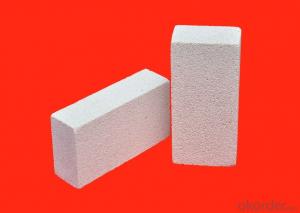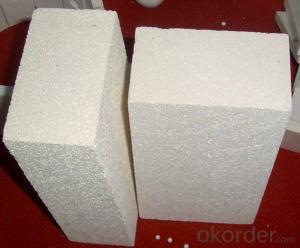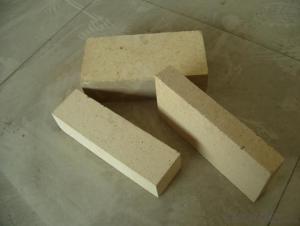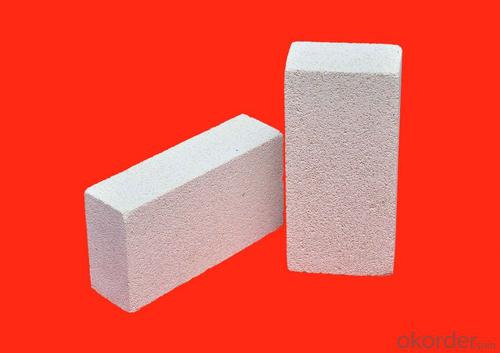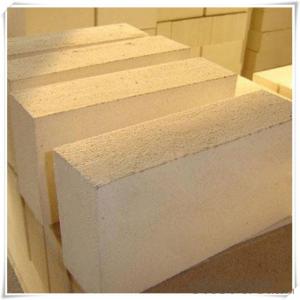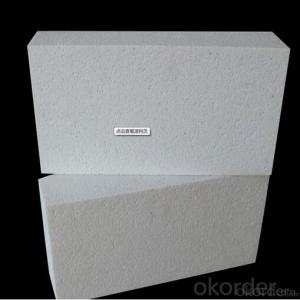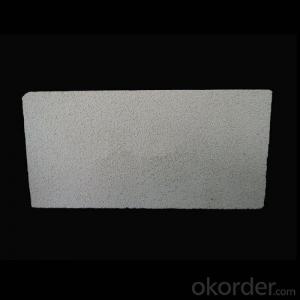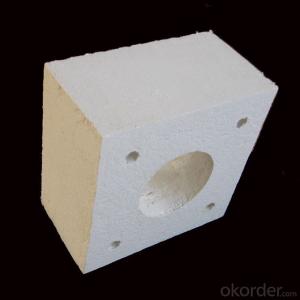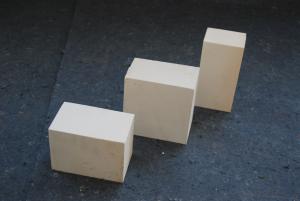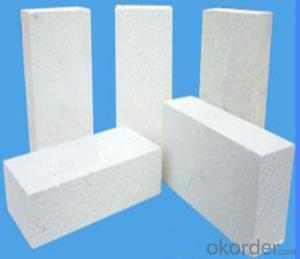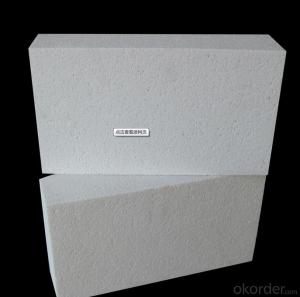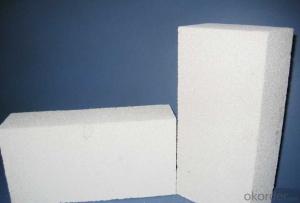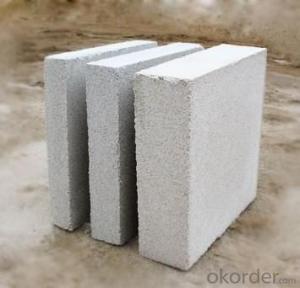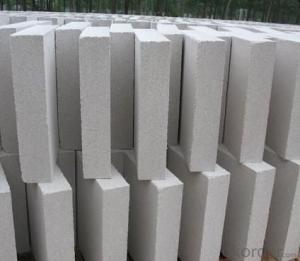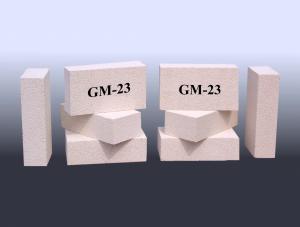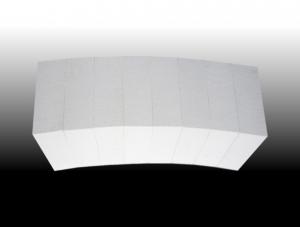Insulating Fire Brick - Refractory GJM Mullite Insulation Brick B-6
- Loading Port:
- Shanghai
- Payment Terms:
- TT OR LC
- Min Order Qty:
- 10 m.t.
- Supply Capability:
- 1000 m.t./month
OKorder Service Pledge
OKorder Financial Service
You Might Also Like
Specifications
mullite insulation brick
1. Low thermal conductivity
2.High hot compressive strength
3.Perfect Energy saving
Refractory GJM Mullite Insulation Brick B-6
Light weight mullite insulation furnace bricks refractory for sale
Advantage
1. Low thermal conductivity
2.High hot compressive strength
3.Perfect Energy saving
Refractory GJM Mullite Insulation Brick B-6
Description:
Lightweight mullite kiln bricks refractory for sale are made from good quality and superpure raw materials, with strictly classified fillings according to their grades. These fillings can form a uniform pore structure after burnt during the process of manufacture. Each grade of products has unique design to meet different thermal, physical and chomical demands.
Application:Refractory GJM Mullite Insulation Brick B-6
Mullite insulation furnace bricks refractory material can be used in linings or heat-insulating materials of the industries, such as, ethylene pyrolysis furnaces, tubular furnaces, reforming furnaces of synthetic ammonia, gas generators and high-temperature shullte kilns, etcRefractory GJM Mullite Insulation Brick B-6
Mullite Insulation furnace refractory material can be used as working lining, where contact with flames directly. This kind of brick can save the kiln energy very muchRefractory GJM Mullite Insulation Brick B-6
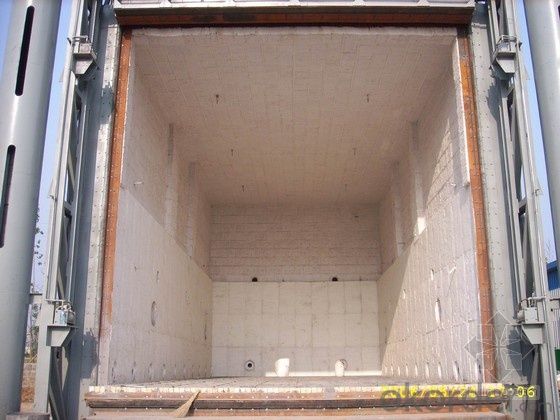

- Q: Can insulating fire bricks be used as a backup insulation in refractory linings?
- Insulating fire bricks have the capability to serve as backup insulation in refractory linings. These bricks are specifically designed with low thermal conductivity, enabling them to effectively minimize heat transfer in high-temperature scenarios. Due to their insulating properties, they are an excellent choice for a secondary insulation layer in refractory linings. This not only aids in reducing heat loss but also enhances overall energy efficiency. Another advantage is their lightweight nature, which simplifies handling and installation compared to alternative refractory materials. Nonetheless, it is crucial to carefully evaluate the application's specific needs and consult with a refractory engineer to confirm the suitability of insulating fire bricks for the particular conditions and performance requirements of the refractory lining.
- Q: Can insulating fire bricks be used in brick ovens?
- Yes, insulating fire bricks can be used in brick ovens. They are designed to withstand high temperatures and have excellent heat insulation properties, making them suitable for use in brick ovens to help retain and distribute heat evenly.
- Q: Can insulating fire bricks be used in residential applications, such as fireplaces or ovens?
- Yes, insulating fire bricks can be used in residential applications such as fireplaces or ovens. Insulating fire bricks are designed to withstand high temperatures and provide excellent insulation, making them suitable for use in these applications. They help retain heat, improve energy efficiency, and enhance safety by preventing heat transfer to surrounding structures.
- Q: Do insulating fire bricks have a high fire resistance rating?
- Yes, insulating fire bricks have a high fire resistance rating. Insulating fire bricks are specially designed to withstand high temperatures and provide excellent insulation against heat transfer. They are made from high-purity refractory materials, such as alumina and silica, which have a high melting point and can withstand extreme heat. These bricks are capable of withstanding temperatures of up to 3000°F (1650°C) and have a thermal conductivity that is much lower than regular bricks or other materials. This makes them ideal for use in applications where high fire resistance is required, such as in industrial furnaces, kilns, fireplaces, and chimneys. Additionally, their insulating properties help to reduce heat loss, making them energy-efficient and cost-effective.
- Q: Is it possible to recycle broken insulating fire bricks?
- It is indeed feasible to recycle damaged insulating fire bricks. These bricks are typically composed of recyclable materials like clay and alumina. After breaking, they can be crushed into tiny particles or ground into a fine powder. These fragments can then be blended with other substances to produce fresh bricks or alternative construction materials. Furthermore, certain recycling facilities may accept broken insulating fire bricks and repurpose them for use in various industries. By recycling these bricks, waste is minimized, resources are conserved, and the environmental consequences of manufacturing new bricks from scratch are reduced.
- Q: How do insulating fire bricks help improve the efficiency of combustion processes?
- Insulating fire bricks help improve the efficiency of combustion processes by providing excellent thermal insulation, which minimizes heat loss and enhances heat transfer to the desired areas. This insulation prevents excessive heat from escaping to the surroundings, allowing for higher temperatures within the combustion chamber. As a result, the combustion process becomes more efficient, leading to better fuel combustion, reduced fuel consumption, and increased energy savings.
- Q: Can insulating fire bricks be used in biomass power plants?
- Insulating fire bricks possess the capability to be utilized within biomass power plants. Specifically designed to endure extreme temperatures and offer insulation, these fire bricks are well-suited for an array of applications in high-temperature settings, including biomass power plants. These power plants generate electricity by incinerating biomass materials such as wood chips, agricultural waste, and other organic substances. The usage of insulating fire bricks can span across multiple areas within a biomass power plant. Primarily, they can be employed to line the combustion chamber where the biomass is burned, releasing heat. The insulating properties of these bricks aid in containing the heat within the combustion chamber, thereby enhancing the efficiency of the biomass combustion process. Furthermore, insulating fire bricks serve a purpose in the construction of the plant's boiler, responsible for converting the heat produced by the biomass incineration into steam. The bricks can be utilized to line the walls and roof of the boiler, delivering thermal insulation and preventing heat loss. This insulation serves to maintain high temperatures inside the boiler, which is vital for steam generation and subsequent power production. Moreover, the construction of the chimney or flue system of biomass power plants can also incorporate insulating fire bricks. These bricks can be utilized to line the interior of the chimney, ensuring that the high temperatures and corrosive gases resulting from biomass combustion are safely contained and directed out of the plant. In summary, insulating fire bricks are an exceptional choice for biomass power plants due to their ability to withstand high temperatures and provide thermal insulation. Their utilization in the combustion chamber, boiler, and chimney systems contributes to the improvement of efficiency and safety in biomass power generation.
- Q: Are insulating fire bricks resistant to flame spread?
- Yes, insulating fire bricks are highly resistant to flame spread. These bricks are specifically designed to withstand high temperatures and effectively contain and insulate heat. They are made from refractory materials that have low thermal conductivity, which means they are excellent at preventing heat transfer and resisting flame spread. Insulating fire bricks are commonly used in applications such as kilns, furnaces, and fireplaces, where the ability to withstand and control high temperatures is crucial. Their resistance to flame spread makes them a reliable and safe choice for these types of environments.
- Q: Can insulating fire bricks be used in fertilizer plants?
- Insulating fire bricks have the capability to be utilized in fertilizer plants, as they possess exceptional thermal insulation properties, high resistance to heat, and low thermal conductivity. These characteristics render them appropriate for various industrial applications, including those found in fertilizer plants. Within fertilizer plants, there are often procedures that involve elevated temperatures, such as the creation of ammonia or the transformation of raw materials into fertilizers. In these processes, insulating fire bricks can be employed to line the walls, floors, and roofs of the furnaces, kilns, and reactors. The thermal insulation provided by insulating fire bricks assists in minimizing heat loss, improving energy efficiency, and maintaining a steady temperature inside the processing units. This is of utmost importance for controlling chemical reactions and ensuring the plant's optimal performance. Furthermore, insulating fire bricks possess a high resistance to chemical attack, which is crucial in fertilizer plants where corrosive substances are frequently handled. They can endure the harsh chemicals and gases present in the production environment without deteriorating or compromising their insulating capabilities. Moreover, insulating fire bricks are lightweight, making them easier to handle and install in various areas of the plant. This can result in cost savings during construction or maintenance activities. In conclusion, insulating fire bricks are a suitable choice for fertilizer plants due to their thermal insulation properties, high resistance to heat, chemical resistance, and lightweight nature. They can contribute to the efficient and safe operation of the plant while providing long-lasting performance in the demanding conditions of the fertilizer industry.
- Q: Can insulating fire bricks be used in electric arc furnaces?
- Insulating fire bricks are capable of being used in electric arc furnaces. Constructed from lightweight materials possessing excellent insulation capabilities, these bricks are well-suited for scenarios necessitating heat insulation. Due to the high temperatures generated by electric arc furnaces, effective insulation is imperative to confine the heat within the furnace chamber. The insulating fire bricks are able to endure the extreme heat emitted by these furnaces, thus averting heat loss and conserving energy. Furthermore, their insulating properties contribute to maintaining a steady temperature inside the furnace, ensuring the efficient melting and refining of metals or other materials. Consequently, insulating fire bricks present a suitable option for implementation in electric arc furnaces.
Send your message to us
Insulating Fire Brick - Refractory GJM Mullite Insulation Brick B-6
- Loading Port:
- Shanghai
- Payment Terms:
- TT OR LC
- Min Order Qty:
- 10 m.t.
- Supply Capability:
- 1000 m.t./month
OKorder Service Pledge
OKorder Financial Service
Similar products
Hot products
Hot Searches
Related keywords
